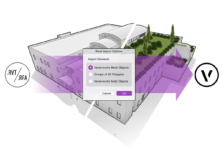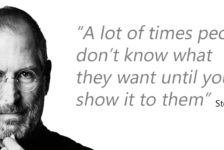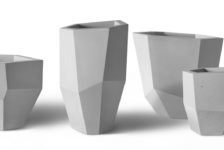Last time, I wrote about the elements of a marketing system. Most of those elements can be in either digital or print format. The format is less important than the decisions you make around content, design, and presentation, but a poorly designed portfolio will drag down the impression it leaves no matter how good your work is.
Just about every article, discussion thread, and book I read in my research agreed that both a digital presence and printed material were important to have, the online component being in support of a printed portfolio. For the sake of argument, let’s consider some of the practical considerations of both digital and print portfolios:
Digital media: website, blog, pdf, files on a USB, CD, DVD, iPad, or laptop are the most common. Online “books” (like Issuu.com), video, and PowerPoint or flickr.com slideshows have also been used (successfully? you tell me). There are also web-hosted opportunities like VisualCV.com and the portfolio application on LinkedIn.com.
PRO:
- Fast, inexpensive, and easy to distribute.
- Can be as simple or complex as desired.
- Shows an interest in current technologies.
- Easy to specialize and update for different audiences (subdomains for websites, different online “books”, or customized CD’s for example).
- Track viewing statistics (Google analytics or included features).
- Digital media is more environmentally friendly, no trees were harmed, no ink used.
- A CD or DVD of your work used as a mail-ahead or leave-behind would be able to contain more information than a brochure.
CON:
- Digital formats are difficult to present in an interview.
- With a website, you will have to pay for your domain name and hosting.
- You might not have the right to publicly post all of your images due to copyright and client privacy issues.
- Difficult to skim. Digital media relies on your audience’s patience with navigation, viewing images online, and reading text.
- Doing this as the only portfolio format demands that you bring hardware to the meeting. Expect to be asked for a print portfolio.
- Templates may be easy to use, but can look like others’ sites.
- Files may be large enough to slow load times, and large pdf files can be difficult to transmit.
- IF the recipient prints it, they’ll do so with their own ink and paper (and might resent the expense). They will likely be printing your work on 8-1/2 x 11” copy paper with unknown printer settings so the printed result is totally out of your hands.
- Internet blocking software may prevent viewing. With all the other applications on their desk, will they really work at it?
- It might not look right on someone else’s computer. Fonts, colors, and layout can shift.
- They all look the same unless opened. This makes it difficult for your stuff to stand-out among all the others.
- You probably will not be asked to use your digital know-how as a Landscape Architect.
- Mailing CD’s that go into the trash, is not environmentally friendly.
- It is easy to get carried away with the technical stuff and neglect the content.
Printed media:Construction document mini-sets, folded posters and brochures, professionally printed books and booklets, store-bought portfolio covers, hand-made books, cut sheets in folders or boxes, postcard sets, and other package designs are all options, and are often combined as part of a marketing system.
PRO:
- Can be done with your own computer, and even professional printing is available at a wide variety of price points.
- Easy to customize.
- Easier to skim.
- Easier to present.
- You control the size, color, weight, and finishes.
- Print materials are tactile.
- You will probably be expected to have a printed portfolio for interviews.
- Your skill with page layout and sequencing may be desirable for producing communication documents for clients.
- A well-made print portfolio demonstrates attention to detail.
- “Old school” is not always a bad thing! Think of it as “time-honored”.
- In this digital age, print materials are becoming more unique and memorable.
- Your materials (if kept) are visually distinctive and take up space. Out of sight may be out of mind.
CON:
- Making several copies can get expensive quickly.
- Customization ease and expense varies widely.
- Hand-made pieces take time to make; your time.
- Professional printers may have minimum orders and might charge you for proofs.
- If you spend a lot of money on a fabulous portfolio, you will not want to lose it or leave it with someone.
- It is easy to get carried away with the vehicle and neglect the content.
- Paper shows wear and inks fade. A print portfolio will not last forever.
- If you go with a particularly inexpensive option, you may be expected to leave it behind, whether you intended to or not.
- Eek! I recently read about an applicant who housed their portfolio in a slick metal box. When the applicant slid the box across the (very expensive, ebony wood inlaid, one of a kind) conference table, it scarred the table’s surface.
You will find that some interviewers will skim your work in ten seconds and spend the rest of the time focused on the conversation with you. Others will expect you to walk them through your materials one project at a time. If they remember the package/website but not you or your work, it missed the mark. The most important thing that your portfolio needs to do is communicate the qualities that make you the best candidate for the work.
With both digital and print media, you can design pretty much anything you want. Keep in mind that designing the portfolio itself is a design opportunity.
Please send or comment with stories of how your portfolio’s format helped you earn a job or a client, and what additional pros and cons you encountered.
Next time, I will share my favorite 10 (in print) resources for portfolio design.
Published in Blog









